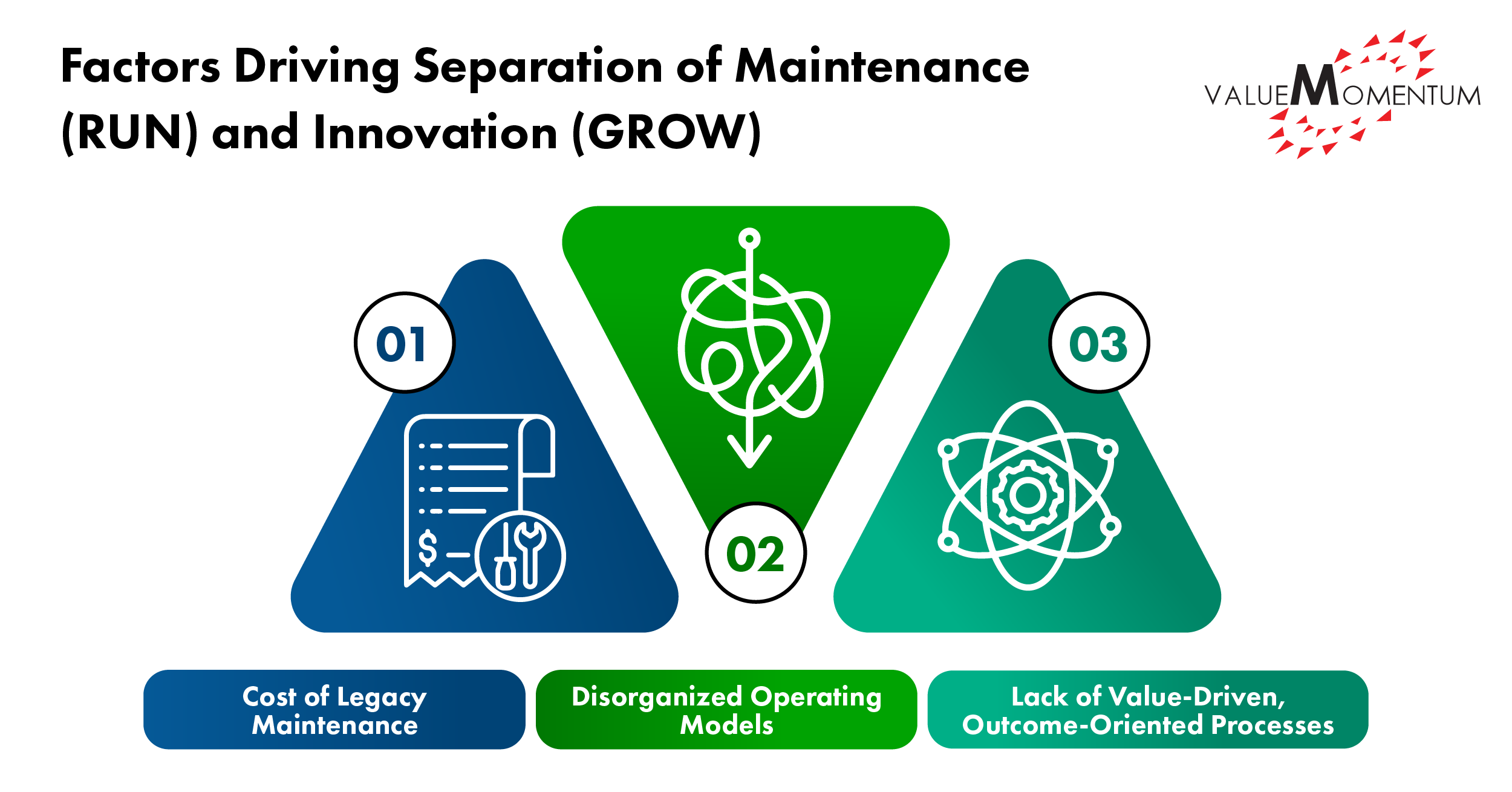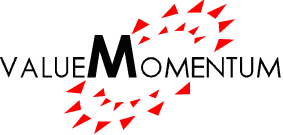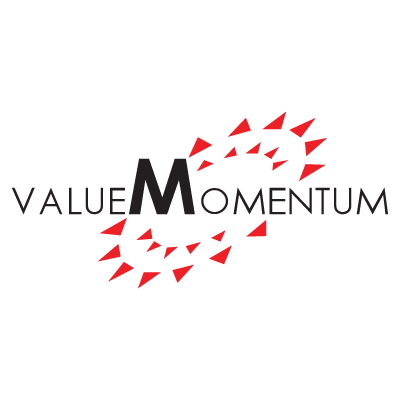For insurers seeking new business growth, maximizing the value of core systems — the systems powering product development, risk evaluation, and price optimization — is an absolute necessity. According to Datos Insights, more than 50% of IT budgets from both midsize and large insurers are allocated to application management services, or the maintenance it takes to run existing systems. And with growing cybersecurity risks, among other factors impacting the insurance industry, carriers should expect these “run” costs to rise.
While run projects are, of course, vital to ensure that the flow of business keeps moving, staying competitive in the evolving insurance industry means devoting resources to strategic growth, too. Driving new business growth comes from developing and launching new products or rolling out new products in additional states or regions.
But enacting these types of “grow” activities is harder than it sounds, and successful grow initiatives rely on modern, high-performing core systems underpinning the entire organization. While application management services and other run activities are vital to keep business operating as it should, grow efforts need to be a top priority as well. Some insurers have successfully figured out effective ways to balance both.
Let’s take a closer look at some of the top challenges with application management services that have been keeping insurers’ core systems from running at an optimal level, as well as an example of how one carrier pushed past these hurdles to maximize its growth opportunities by optimizing its run operations.
Challenges with Application Management Services
Core transformation and its importance for achieving continuous growth have not been lost on insurers. Many have already invested in platform-based core suites, cloud migration, and advanced analytics to drive expansion and customer-centricity. When it comes to managing all of these services, however, insurers may run into some challenges.
Moving to cloud-based core platforms requires a significant initial investment as well as ongoing licensing costs. Shifting from on-premises to cloud can also introduce security and compliance issues that insurers have to manage, especially given the numerous APIs used to integrate with partner platforms, third-party data platforms, and disparate internal systems. Add to this the complication of the multi-cloud strategy that many insurers are dealing with, and it’s easy to see why run investments remain such a high portion of the IT budget.
Optimizing core systems and the application management services that keep them running requires a comprehensive strategy that balances elements like monitoring applications for issues or opportunities for streamlining with top-tier incident management and governance frameworks and streamlined service request systems.
Tackling these factors can enable insurers to devote more time to launching growth initiatives that can help their organization keep existing customers and attract new business. Here’s how one insurer addressed this challenge.
Driving Both Run and Grow Initiatives
Recent core initiatives from insurers have improved underwriting capabilities, automated manual workflows, and made data more accessible to underwriters and business users. These core improvements drive product innovation, enabling insurers to expand rollout and accelerate speed to market. One century-old insurer vastly improved the application management services of their existing core systems to further speed up their business expansion strategy.
Under the leadership of a new CIO, this insurer set out to streamline operations and improve the performance and output of their core systems. This included moving from a project-centric delivery model to a product-centric framework to ensure more consistent output and better alignment between IT and the business. The insurer mapped products to the organization’s business capabilities, realigned teams around products, adopted a new budgeting structure, and pivoted to outcome-focused metrics for success.
Changing the operating model also freed up the team to focus on IT performance, leading to faster time to value, smoother integration of vendors into processes, higher quality delivery of products, and more agility. Optimizing all of these run activities opened the door for the insurer to focus on more grow efforts, including a focus on distributing its products to a broader market by entering new states.
The insurer partnered with ValueMomentum to migrate its on-premises core deployments to Guidewire Cloud using Guidewire’s SurePath implementation framework as well as standardized content on Guidewire’s platform to streamline the needed requirements review and analysis for new states. By prioritizing the creation of a strong digital core, the insurer was aiming to accelerate its overall delivery time for the project as well as the time needed for future state rollouts.
Making the shift to Guidewire Cloud also enabled the carrier to develop rates and pricing models faster, complete end-to-end testing sooner, and shorten the time needed for QA and UAT. These milestones were achieved due to the program team’s introduction of a pre-UAT phase conducted by the QA team and SMEs as well as the quality team identifying critical defects at an early stage and testing functionalities simultaneously. Prioritizing these vital run capabilities allowed the insurer to roll out five commercial lines of business in a new state simultaneously. The insurer is on track to enter a new state in Q2 2024 and enter a new state each year through 2030.
Why Both Run and Grow Investments Matter

Insurers know that the technology responsible for keeping the business running is important, and their investment breakdown reflects that. But it’s not enough to focus on having a modern core system in place if there is no investment in grow activity. To stay competitive in today’s marketplace, insurers must move away from thinking of these initiatives as separate. They must assess where IT resources can be pooled and complexities reduced, tackling both initiatives as part of the same growth cycle.
By reducing legacy maintenance, centralizing operating models, and implementing an outcome-driven product cycle, insurers can develop hybrid value propositions that seamlessly transition them into an era of innovation and profitability. Balancing application management services and other run investments with grow initiatives ensures that smoothly running core systems directly translate to achieving insurers’ expansion goals.
For more insights and information on how to prioritize innovation, explore ValueMomentum’s CoreLeverage Services, designed to help insurers maximize the value of their core systems to drive growth in a rapidly evolving landscape.


